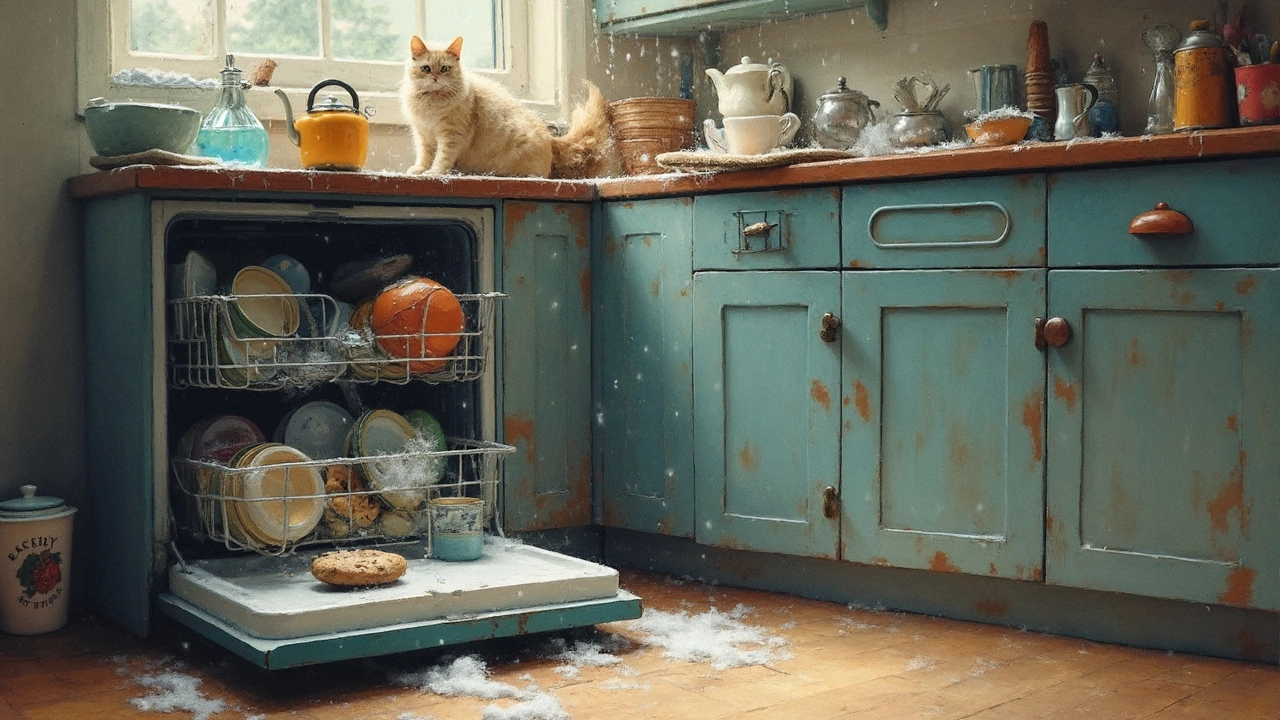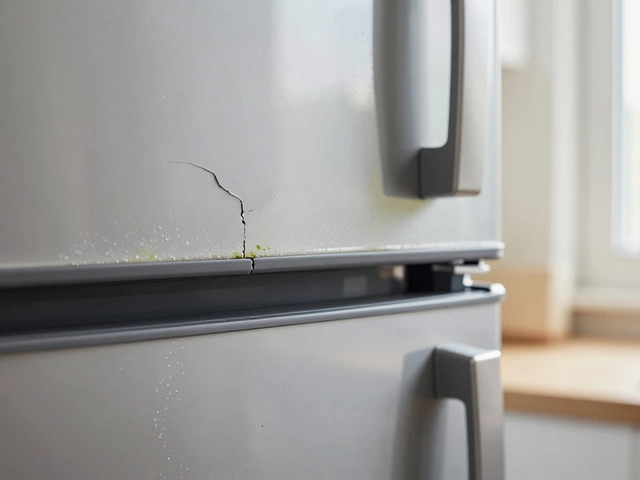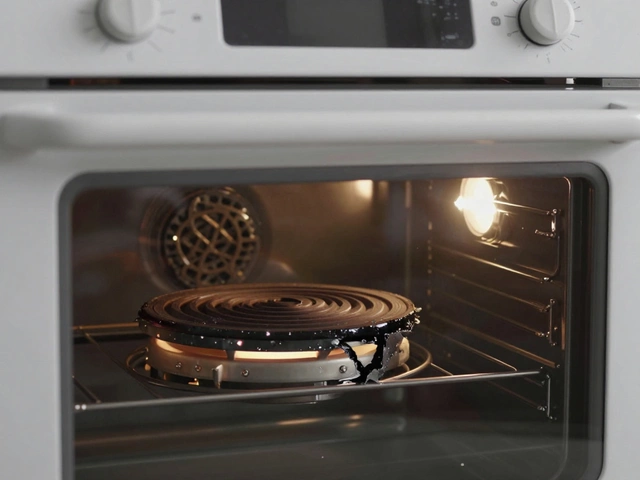If your washing machine is giving you trouble, you’re probably wondering if it’s just showing its age or if it has more years left in it. Knowing what counts as "old" for a washer isn’t just a numbers game—there’s more going on here than you might think.
Most washers don’t last forever. The real-world average sits somewhere between 8 and 12 years, but a few brands can push past that if you treat them well. Still, a 10-year-old machine? That’s usually considered old by industry insiders, even if it turns on every morning. Age isn’t just about the calendar; things like rust, leaks, noisy operation, and wild vibrations are all signals your washer might be winding down.
Before you jump to buying a new one, it’s important to weigh repair costs versus replacement. Some older models are total workhorses and worth fixing up, while others become money pits if parts keep breaking. The right answer often comes down to how much you’ve already spent, how bad the issues are, and whether you’re ready for something more energy-efficient with extra features.
- How Long Do Washing Machines Really Last?
- Signs Your Washer Is Getting Old
- Repairs vs. Replacement: What Makes Sense?
- How Age Impacts Efficiency and Performance
- Tips to Make Your Washing Machine Last Longer
- When Is It Safe to Keep Using an Old Washer?
How Long Do Washing Machines Really Last?
The truth is, most people have no idea exactly how many years their washer should last—until it starts making weird noises or flooding the laundry room. So, what’s the real answer? Most washing machines give you solid service for about 8 to 12 years. It’s not just a random guess. Appliance makers and repair pros agree that’s the sweet spot for most brands out there now.
Front-loaders usually land at the lower end—closer to 8 or 9 years. Top-loaders hang in there a bit longer, sometimes up to 12 years or more, mostly because their design is a bit simpler. But don’t let those averages fool you. Loads per week, water quality, and how well you keep up with basic maintenance can warp these numbers a lot.
Check out some quick realities in the table below:
| Type | Average Lifespan (Years) | Common Issues as They Age |
|---|---|---|
| Top-Loader | 10 to 12 | Agitator failures, leaks, loud spin |
| Front-Loader | 8 to 10 | Door seal mold, drum bearing noise |
Your brand also matters. Some brands with a reputation for reliability have machines that tick past the 15-year mark. Still, if you’re using your washer almost every day, even the toughest model can give up a little early.
One thing often missed: most warranties run out after the first year, and extended coverage rarely gets you past five. So, once your washing machine is over 10 years old, expect a higher risk for major repairs and more frequent little problems.
Bottom line: If your machine is past the decade mark, it’s living on borrowed time, especially if you do laundry almost daily. Keep a watch for problems before they multiply and get pricier to fix.
Signs Your Washer Is Getting Old
You can spot an old washing machine by watching for changes in the way it runs and handles day-to-day chores. Most washers start to show their age well before they totally fail. Catching these signs early can help you avoid expensive breakdowns or pointless repair bills.
- Loud, unusual noises: Thumping, banging, or squeaking that wasn’t there at the start usually means parts are wearing out. This can point to failing bearings, a wobbly drum, or loose belts.
- Leaks: Water pooling under your washer is never good. If gaskets and hoses are constantly getting replaced, or the tub itself is rusting, that’s a strong signal your machine is past its prime.
- Excessive vibrations: If your washer tries to dance across the room, it means something inside isn’t working right anymore. If you’ve leveled it and there’s still shaking, that could be a tired suspension or worn shock absorbers.
- Cycles take too long or don’t finish: Old electronic boards and timers can get flaky, causing wash cycles to stall or take forever to complete. You shouldn’t have to baby-sit your clothes all afternoon.
- Rust and peeling paint: Spotting rust inside or outside the drum hints the machine’s been exposed to moisture for years and might already have hidden corrosion.
- Persistent odors: Normal cleaning can clear out most smells, but a washer that always stinks may have deep grime or mold buildup that’s hard to fix in aging machines.
- Increasing energy or water bills: Older machines tend to use more water and power as their components drag. If your bills keep creeping up and it’s not lifestyle changes, your washer could be the culprit.
Manufacturers say the average life of a washing machine is 10 years, but here’s a quick look at the age when repairs tend to spike:
| Washer Age | Common Problems | Likelihood Repairs Needed |
|---|---|---|
| 1-4 years | Minor: controls, hoses | Low |
| 5-8 years | Belts, seals, bearings | Medium |
| 9+ years | Pumps, motor, drum, major leaks | High |
If you see two or more of these signs and your machine is already close to, or over, the 8-10 year mark, it’s probably time to consider whether continued repair or even replacement makes more sense for you.
Repairs vs. Replacement: What Makes Sense?
No one wants to throw money at a washing machine repair only to have something else break down a month later. Deciding when to call it quits often comes down to a mix of age, repair cost, and how the machine has held up over the years.
Here’s a good rule of thumb: if the repair will cost more than 50% of the price of a new machine, it’s usually smarter to upgrade. This is true even if the washer looks fine on the outside. Modern machines are more efficient, so higher upfront costs can pay off with lower electric and water bills.
- Washing machine age: If your washer is less than five years old and has a problem, most fixes are worth trying, especially if a warranty covers it. Past eight or ten years? Parts may be harder to find and repairs tend to stick for less time.
- Repair cost: Small fixes (under $200) like belts or hoses make sense. But motor replacements, control board swaps, or major leaks can quickly add up. If you’re quoted more than half the price of a new model, don’t toss good money after bad.
- Performance: If you’re noticing longer cycles, louder noise, or higher energy use, that’s a hint your washer is past its prime, even if it technically runs.
Here's a rough look at the numbers for average repair costs if you’re curious:
| Repair Type | Average Cost (USD) |
|---|---|
| Drive belt or hose | $80–$150 |
| Pump replacement | $150–$300 |
| Control board | $250–$350 |
| Drum replacement | $350–$500 |
One more thing—newer machines are packed with tech that uses less water, less power, and gets clothes cleaner. If you replace a machine from the early 2010s or before, you could see up to 30% drops in your energy bills. That’s why it pays to look at the big picture, not just the number on today’s bill.

How Age Impacts Efficiency and Performance
Every year your washing machine gets older, you’re not just adding another candle to its birthday cake. You’re slowly losing out on efficiency and top performance. It’s pretty common for a washing machine over eight years old to start slacking off—longer wash times, higher water and energy use, and sometimes even clothes that don’t come out as clean as they should.
Older washers, especially anything made before 2010, usually can’t hold a candle to today’s models when it comes to saving water and electricity. Newer machines often use around 50% less energy and up to 30% less water with every load. That gap only gets wider as parts on old washers start to wear out.
| Washer Age | Average Water Use (per load) | Average Energy Use (kWh/load) |
|---|---|---|
| Brand New | 14-18 gallons | 0.3 - 0.8 |
| 10+ Years Old | 27-40 gallons | 1.0 - 1.5 |
If you notice your machine running longer cycles, using more detergent, or just being louder than it used to, that’s your cue something's off. Bearings, motors, and electronic controls don’t age gracefully—efficiency drops the most when those parts go. Another pain: with every extra rinse or longer spin, you’re adding a little more to your power and water bills every month.
- If your energy bills slowly creep higher and your washer is over ten years old, don’t ignore it—it’s probably burning more juice than you realize.
- Older machines also struggle with newer, super-concentrated detergents and high-efficiency requirements, so you might end up using more soap and water just to get the same results.
- If the spin cycles leave laundry soggy, that means more drying time, which pushes your electric bills higher and wastes time.
Bottom line: an old washing machine hits your wallet in more ways than one. If your machine is a decade old, those little inefficiencies add up fast, and performance almost never gets better with age.
Tips to Make Your Washing Machine Last Longer
Want to get the most years out of your washer? A few simple habits can make a big difference in how long your washing machine lasts. It doesn’t have to be complicated, but being a little bit proactive can save you from big headaches later.
- Don’t overload your washer: Stuffing in extra towels or jeans can strain the motor, damage the drum, and wear out the suspension. Fill it about three-quarters full, not to the brim.
- Use the right detergent: High-efficiency (HE) washers need HE detergent. Using regular soap can cause buildup and even trigger costly repairs.
- Clean the lint filter and gasket regularly: Lint, hair, and residue can clog the filter or build up in the door seals, eventually causing leaks or musty smells.
- Level your machine: If your washer shakes or walks during the spin cycle, check the legs. An unlevel washer bangs itself apart over time.
- Don’t ignore small issues: Leaks, odd noises, or funky smells are not normal. Fix them right away; otherwise, they can turn into major repairs or early replacement.
- Leave the door open after use: This helps keep mold and smells away, especially with front loaders.
Some models tell you when it’s time to run a cleaning cycle. If yours doesn’t, run a hot wash with washer cleaner (or just white vinegar) every month or so. This cuts down on buildup inside the drum and in the hoses.
| Maintenance Frequency | Typical Washer Lifespan |
|---|---|
| Regular (monthly) | 10-14 years |
| Occasional | 7-10 years |
| Rare/never | 5-7 years |
Easy stuff, right? When you stay on top of these basic steps, you’re helping your washing machine keep running without trouble—saving you money and hassle on repairs or an early replacement.
When Is It Safe to Keep Using an Old Washer?
There's nothing wrong with squeezing a few extra years out of an old washing machine if it’s still getting the job done—so long as you play it smart. Age alone doesn’t always mean your washer is on its last leg, but you need to pay close attention to a few things before keeping it in service.
If your washer hasn’t had any major issues, isn’t leaking, and isn’t making scary noises, you’re probably fine to keep using it. Check hoses for cracks or splits, make sure the drum spins as it should without shaking the house, and be honest about any weird smells or mildew. A little maintenance goes a long way here—simple stuff like cleaning the filter and running a hot cycle with vinegar can keep gunk at bay and cut down on the risk of breakdowns.
Here are solid signs your older washer is still safe to use:
- No visible leaks or pooling water during or after cycles
- Electrical panel and controls still work reliably
- No burning smells, sparking, or tripped breakers
- The drum spins and agitates without banging or grinding
- All hoses are free of hardening, cracking, or bulges
You also want to keep in mind that older appliance models might use more water and power than new releases, which could bump up your bills. According to Energy Star, newer top-loaders use nearly 25% less energy and 33% less water than models made fifteen years ago. Here’s a quick look at how old and new machines stack up:
| Washer Age | Estimated Water Use (per load) | Estimated Power Use (kWh/year) |
|---|---|---|
| 15+ years (old) | 40-45 gallons | 800-900 |
| 5 years (new, Energy Star) | 13-15 gallons | 150-250 |
If you’re not worried about the higher resource use—and everything else checks out—you can keep washing with confidence. Just keep an eye out for changes in noise, performance, or safety. If you’re ever unsure, a pro appliance tech can inspect your machine for peace of mind.





